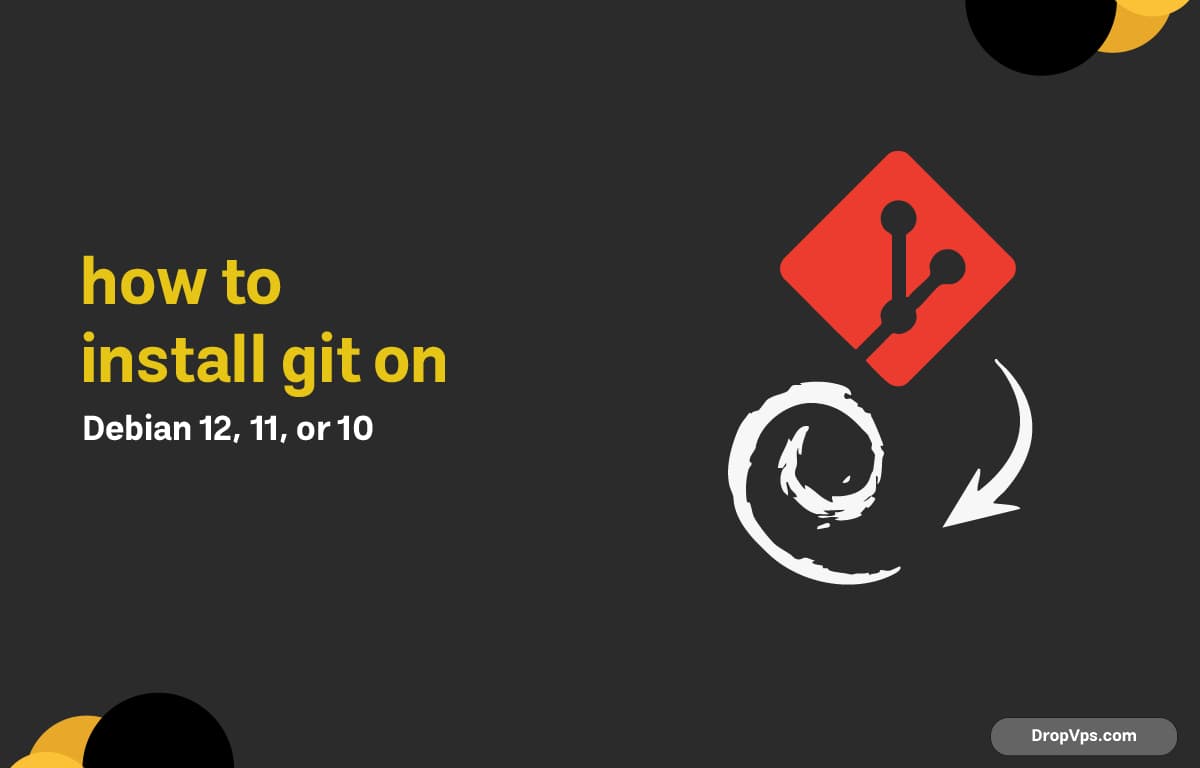DropVPS Team
Writer: John hens
How to Install Git on Debian 12, 11, or 10

Table of Contents
What you will read?
Git is the most widely used version control system for developers and system administrators. On Debian-based systems like Debian 12 (Bookworm), Debian 11 (Bullseye), and Debian 10 (Buster), installing Git is straightforward and requires only a few steps
Step 1: Update the System Packages
Before installing Git, update the package index to ensure you are installing the latest version available in Debian’s repositories:
sudo apt update
sudo apt upgrade -yStep 2: Install Git
Use the default Debian repositories to install Git. This works for Debian 12, 11, and 10:
sudo apt install git -yVerify the installation with:
git --versionThis command will display the installed Git version.
Step 3: Configure Git User Information
Git requires user details for commits. Configure your name and email address globally on your system:
git config --global user.name "Your Name"
git config --global user.email "[email protected]"You can confirm your configuration with:
git config --listStep 4: Test Git Installation
To confirm that Git is working properly, create a new directory and initialize a repository:
mkdir test-git
cd test-git
git initIf you see the message “Initialized empty Git repository”, Git is successfully installed and ready to use.